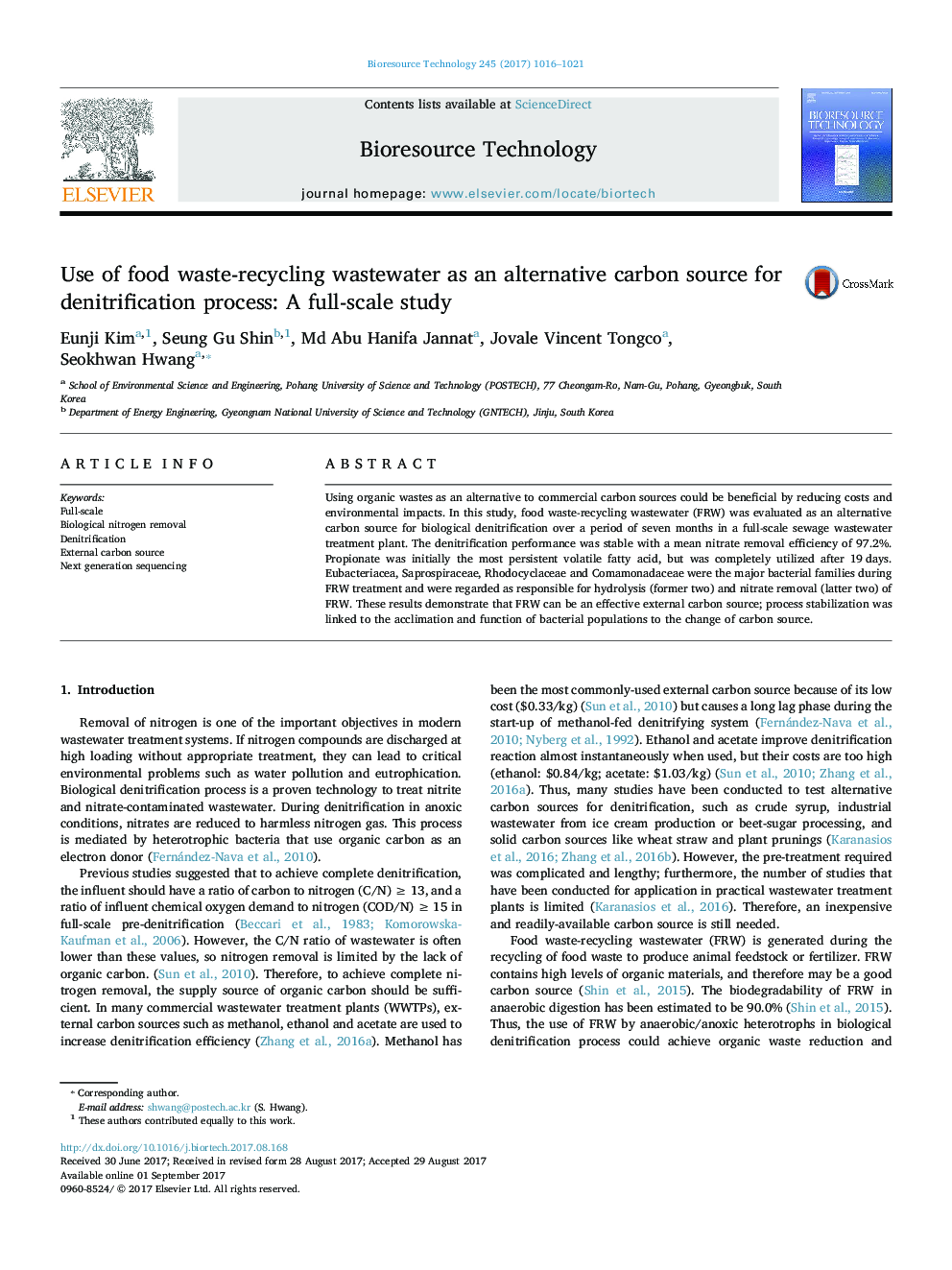| کد مقاله | کد نشریه | سال انتشار | مقاله انگلیسی | نسخه تمام متن |
|---|---|---|---|---|
| 4996805 | 1368274 | 2017 | 6 صفحه PDF | دانلود رایگان |
- A full-scale WWTP fed with FRW as carbon source achieved desired nitrate removal.
- Propionate was the most persistent VFA initially but was fully utilized after 19Â days.
- Eubacteriacea and Saprospiraceae were potentially responsible for hydrolysis for FRW.
- Rhodocyclaceae and Comamonadaceae putatively played a role in the nitrate removal.
Using organic wastes as an alternative to commercial carbon sources could be beneficial by reducing costs and environmental impacts. In this study, food waste-recycling wastewater (FRW) was evaluated as an alternative carbon source for biological denitrification over a period of seven months in a full-scale sewage wastewater treatment plant. The denitrification performance was stable with a mean nitrate removal efficiency of 97.2%. Propionate was initially the most persistent volatile fatty acid, but was completely utilized after 19Â days. Eubacteriacea, Saprospiraceae, Rhodocyclaceae and Comamonadaceae were the major bacterial families during FRW treatment and were regarded as responsible for hydrolysis (former two) and nitrate removal (latter two) of FRW. These results demonstrate that FRW can be an effective external carbon source; process stabilization was linked to the acclimation and function of bacterial populations to the change of carbon source.
Journal: Bioresource Technology - Volume 245, Part A, December 2017, Pages 1016-1021
